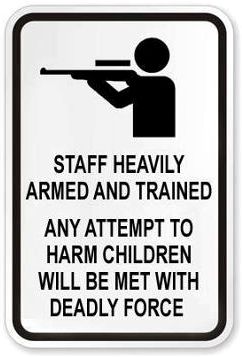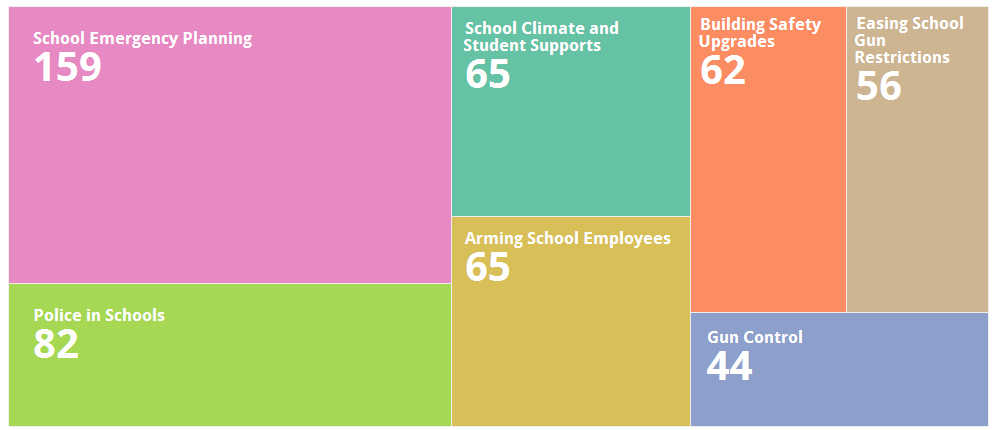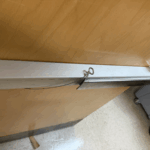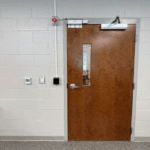It’s one of my favorite times of the year…”Back to School!”, and school security is all over the news. How do we keep our kids safe at school?
Are police officers the answer?
A Charleston police officer adjusts to the elementary school security beat – Charleston City Paper
Wilson is going to become a familiar sight at St. Andrews this school year. As a member of Cluster 5 on the Charleston Police Department’s newly formed School Security Response Team, Wilson is responsible for patrolling the halls of seven West Ashley elementary schools, private and public. Formed in response to the Sandy Hook Elementary School shooting of December 2012, the new team of 19 officers is trained to expect and prevent the worst in 35 elementary schools across the city.
The Sandy Hook shooting, which claimed 26 lives at a school in Newtown, Conn., not only rekindled a long-simmering gun debate but prompted city governments and school districts across the country to reassess elementary school security measures. In North Charleston, Mayor Keith Summey almost immediately started pushing for the placement of a full-time officer in each of the city’s 21 public elementary schools, a controversial $2 million measure that City Council eventually voted in favor of. In Charleston, after lengthy public debate, City Council voted 7-6 in February for a plan that would hire three officers for each of six “clusters,” or geographical school patrol areas. The officers move from one school to another within their cluster throughout the school day, as opposed to school resource officers at middle and high schools who stick to one school. A 19th officer was hired as a supervisor.
Or armed teachers and staff?
 Arkansas private school: ‘Staff is armed and trained’ – The Daily Caller
Arkansas private school: ‘Staff is armed and trained’ – The Daily Caller
Staff members began receiving training and permits to carry weapons earlier this year, in response to the mass shooting at Sandy Hook Elementary in Newtown, Conn. Now, a sign outside Christian Academy stands as a warning to any would-be shooter.
“Staff is armed and trained. Any attempt to harm children will be met with deadly force,” reads the sign.
Police Academy-trained volunteers?
Code Blue Program Focuses on Security at Fort Worth Schools – NBC DFW
Weatherford is one of about 30 volunteers trained this summer at the Police Academy to patrol elementary schools and be on the lookout for unusual behavior.
“I wanted to give back to my community,” he said. “I will be on the lookout for things like large coats in the dead of summer, and too many backpacks, that kind of thing.”
About 30 volunteers will patrol 10 elementary schools this year as part of a program called Code Blue. Police want these trained volunteers to become familiar with the students and their families, so they know who belongs and who is a visitor.
Or is it the school’s administrative assistant who’s protecting our kids?
As school security ratchets up, ‘first person a parent or visitor meets’ remains key deterrent – Chicago Tribune
Even with all that technology, though, the school’s most important security feature might be Denise Harwood.
She has been an administrative assistant at Roslyn Road for 17 years, long enough to remember when outside doors remained unlocked during the day. Today, she watches a video monitor to decide whether visitors can come through the front door, then gives them another once-over in the office before allowing them to access the rest of the school.
“Part of the office staff’s job is to be the first person a parent or visitor meets,” she said. “You always try to welcome everybody warmly, but if you have any suspicion at all that somebody shouldn’t be here, you don’t let them go into the building.”
Back To School: From Armed Guards To Door Buzzers, Different Takes On Security – The Courant
Eight months after the shootings at Sandy Hook Elementary School in Newtown left 26 people dead, many schools across the state are preparing to welcome students back from summer break with increased security measures in place.
But which types of safety measures and how they should be funded has been a source of debate, with no clear consensus on the best way to protect children and staff members.
Schools in Maine have also made various types of security upgrades, but the bill that would have given Maine teachers and staff the option to carry concealed handguns in school was not passed:
Students to find better security at many Maine schools – Portland Press Herald
Many security changes were made in the immediate aftermath of the mass shooting in December at Sandy Hook Elementary School, where Adam Lanza killed 26 students and teachers. Larger projects, usually involving new construction in a school entryway, were delayed until the summer months when students were on break.
At least one more drastic measure that came about after Newtown, a bill that would have given schools in Maine the option of allowing teachers and other staff members to carry concealed handguns in school, failed in the legislative session.
NBC News gave an update on what is being done nationwide:
School districts struggle to bolster security amid dwindling resources – NBC News
Though more than 450 school safety bills were proposed in state legislatures in the aftermath of the Newtown, Conn., shooting, which left 26 dead, 162 have failed and 310 were pending by late May, according to an analysis done by Education Week.
Bills that did become law have mostly targeted funding for school resource officers, such as those in Arkansas, Missouri, Pennsylvania, Arizona, Virginia and Indiana. Other new laws have focused on making upgrades to buildings and requiring active shooter drills. Still others, in states such as Alabama, Arkansas, Kansas, South Dakota, Tennessee and Texas, have authorized some K-12 school staff to carry firearms, according to the National Conference of State Legislatures.
Maryland and Connecticut have pegged funds — $25 million and up to $15 million, respectively – for additional school safety measures.
But the bulk of recent school security efforts are being made at the local level, since federal funding for many programs introduced after Columbine have either expired or been cut, Trump said. “We lost all of the school emergency planning grants, the funding for school resource officers, the funding for security equipment,” he said, adding that, after Newtown, “we didn’t see any quick, new programs and resources” at the federal level.
This report from Education Week analyzes the status of the school safety legislation across the country (choose your state on the drop-down list to see all of the bills):
School Safety Legislation Since Newtown – Education Week
In each of the four geographic regions used by the Census Bureau, “School Emergency Planning” legislation was the most popular category. The numbers below don’t represent individual bills, but which categories legislation addressed.
The analysis found that lawmakers in the South introduced the highest number of relevant bills, 188, while Northeast legislators introduced the second-highest total, 107. The West region, meanwhile, generated the least activity, with just 64 bills related to school safety in some way.
This product is being sold as an alternative to replacing existing locks with classroom security locks. What are your thoughts on this application?
Denville company’s lockdown magnets among a sea of school security products – NJ.com
As sales climbed, the Denville business started getting complaints that the magnets violate New Jersey building codes by disabling the locks on doors.
In February, the New Jersey Division of Fire Safety sent a letter to the state’s schools permitting the use of new security devices, including magnets over strike plates, as long as they weren’t applied to fire doors like the ones used for boiler rooms.
Lee Ambrosi said she mentions on packaging slips, especially for magnets headed out of state, that schools should consult with their local fire officials before using the device.
**************************************************************
In other door related news…admittedly a somewhat random collection of articles, but the first one cracks me up:
Time to switch to e-cigarettes – Naperville Patch
An employee became upset with her office manager for propping the fire door open while she smoked outside in the 4000 block of Idlewild Lane, police said. The employee then stole the wooden door stop her manager used to prop the door open and sped off in the manager’s EZ-Go golf cart with it. The employee later gave a police officer a ride on the golf cart to find the door stop in an open field where she threw it.
Moviegoers trapped during bear spray attack in Saskatoon – Metro News
Fire officials say emergency exits were locked when people tried to flee a bear spray attack in the middle of a late-night show.
Acting assistant fire chief Luc Durand says magnetic locks on the emergency exits at the Galaxy Cinemas in Saskatoon did not release when patrons pressed on the doors Tuesday night.
Durand says the locks are supposed to release within 15 seconds after someone presses on the handles or if someone pulls the fire alarm. But he says the alarm was never pulled and the mechanism that would have released the locks wasn’t present.
Police say there were about 150 people in the theatre when two men and one woman entered and discharged bear spray.
Movie door would have opened had alarm sounded: Cineplex – NewsTalk 980
Galaxy Cinemas is explaining their side of the story following Tuesday night’s bear spray incident.
Saskatoon Fire officials say emergency exits were locked when moviegoers tried to flee the attack.
The doors were set up so they wouldn’t open into an unsafe construction area, said Pat Marshall, vice-president of communications and investor relations with Cineplex.
“The door would have opened if there was fire alarm, and if it had been activated, or if the power had gone out in the building. So there were two of the three elements of the door opening that did work,” Marshall said, adding there was a sign on the door to indicate it would not open unless the fire alarm sounded.
Woman calls 911 after being locked in an acupuncture clinic mid-treatment as owner goes home – Mail Online
An acupuncture patient was forced to call police and pull out the needles herself after the clinician went home mid-treatment, leaving her locked inside a Texas center.
The woman called 911 after she suddenly saw acupuncturist Dr Jeff Tsing, who claims to have 20 years experience, leave Arlington’s Hwa Tow Acupuncture and Chinese Herbs Clinic while the pins were still stuck in her skin on August 5.
But the bizarre lapse didn’t just stun the woman – both the licensed acupuncture practitioner and 911 operator were equally as confused.
You need to login or register to bookmark/favorite this content.






Just need to comment about the strike magnet. They can’t be used on a fire rated door but alot of classroom corridor doors are 20 min rated. They are easy to spot because they are also the ones with wired glass.
I completely agree…this has been my issue with any of the “add-on” products that prevent the door from latching. I thought it was interesting that the AHJ gave the district approval to use them on classrooms as long as they weren’t on rooms like boiler rooms. I hesitate to start down the slippery slope of exceptions and trade-offs, but I do understand the cost implications of buying new locks vs. buying a magnet.
“Are police officers the answer?” A resounding “YES.”
If fact, there should be a police substation in, or very near, every school across the nation.
I like the idea of local police precints “Sharing” space in a school… Its the best of both worlds…
The school gets more protection and the students develop a better relationship with police.
I have no problem with police and armed teachers and staff.
But it is not scalable, turnstiles, choke points, single entries, security interlocks.
I know I know tell me I am building prisons but I prefer to call them safe havens.
Honestly I despise it all, it makes me sick.